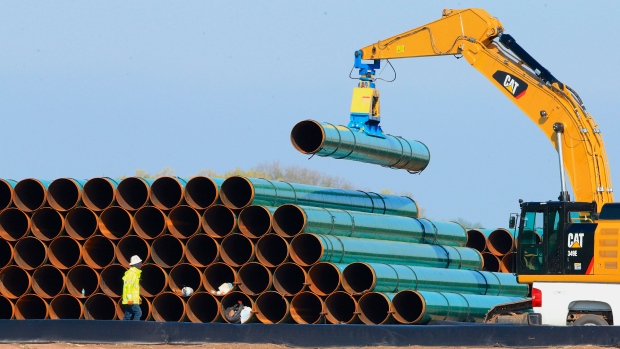Jul 18, 2017
Rover natural gas pipeline start pushed back to late summer
, Reuters

Energy Transfer Partners LP (ETP.N) said on Tuesday it has delayed the start of its Rover natural gas pipeline running from Pennsylvania to Ontario until later this summer.
Rover, the biggest gas pipeline under construction in the United States, originally was expected to start in late July but the first phase was pushed back after regulators said Energy Transfer Partners (ETP) first needed to meet certain requirements.
"As a result of our continued efforts to work with FERC and the Ohio EPA, we are anticipating that part or all of Phase 1 has the potential for an in service date of late summer of 2017," Alexis Daniel, a spokeswoman at Energy Transfer Partners (ETP) said in an email.
She was referring to delays caused by requirements set by the U.S. Federal Energy Regulatory Commission (FERC) and the Ohio Environmental Protection Agency (EPA) after drilling fluids spilled into an Ohio wetland during construction in April.
The company, however, said it still expects the second and final phase of the US$4.2 billion project to enter service in November.
On May 10, FERC banned ETP from starting new horizontal directional drilling under waterways and roads following the release of about two million gallons of drilling fluid, a clay and water mix, into Tuscarawas River wetland in Ohio.
FERC said it would continue to ban ETP from new horizontal drilling until the company explains how non-approved hydrocarbons got into the fluid that spilled into the Tuscarawas wetlands. The company must also develop a plan to remove and dispose of drilling fluids to an Ohio EPA-approved site, among other things.
Separately, the Ohio EPA last week asked the state's attorney general to pursue civil penalties against ETP for a series of environmental violations during the Rover construction, including the Tuscarawas wetlands spill.
Once it enters service, the pipeline will move up to 3.25 billion cubic feet (bcf) per day of gas from the Marcellus and Utica shale fields in Pennsylvania, Ohio and West Virginia to customers in Ohio, Michigan, Ontario and elsewhere.
One bcf of gas is enough to power about 5 million U.S. homes.
Analysts expect several energy companies to increase gas production once Rover enters service to fill the pipe, including Antero Resources Corp (AR.N), Eclipse Resources Corp (ECR.N),EQT Corp (EQT.N), Gulfport Energy Corp (GPOR.O), Rice Energy Inc(RICE.N), Range Resources Corp (RRC.N) and Southwestern EnergyCo (SWN.N).



